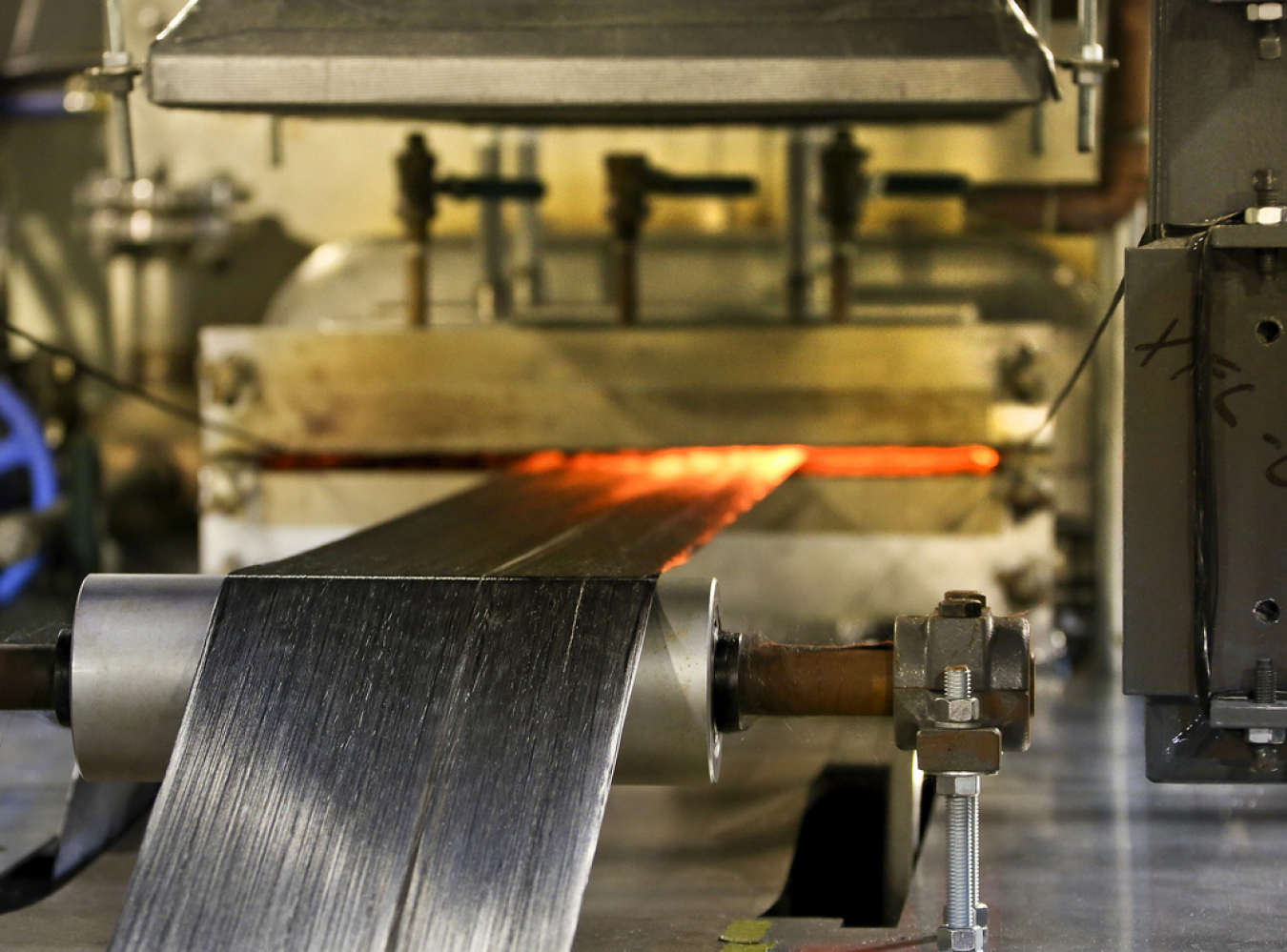From strengthening wind blades to lightening vehicles, find out how carbon fiber is making clean energy technologies more efficient, durable and re...
Office of Energy Efficiency & Renewable Energy
February 7, 2014
Oxidized fibers move to a high temperature furnace, where material is converted into carbon fiber at Oak Ridge National Laboratory's Carbon Fiber Technology Facility (CFTC). The CFTC enables companies to test low-cost carbon fiber for use in several industries including the clean energy sector. | Photo courtesy of Oak Ridge National Laboratory
Carbon fiber is a key ingredient to our energy future. This lightweight, ultra-strong material can help make clean energy technologies more efficient, durable and reliable. To help lower the production cost of carbon fiber, the Energy Department’s Vehicles Technologies Office (VTO) established the Carbon Fiber Technology Facility (CFTC) at Oak Ridge National Laboratory through the American Recovery and Reinvestment Act.
VTO and the Energy Department’s Advanced Manufacturing Office (AMO) now support operations at CFTC, a key part of the Clean Energy Manufacturing Initiative. The CFTC, the first facility of its kind in the United States, enables companies to test low-cost carbon fiber for use in several industries including the rapidly growing clean energy market. A few ways the clean energy industry uses carbon fiber are below.
STRENGTHENING WIND BLADES
In America’s record-smashing wind industry, demand for carbon fiber is increasing as manufacturers build larger turbines with longer blades for land-based wind energy systems as well as new offshore wind projects. Find out how the Energy Department’s Wind Program works with U.S. manufacturers to improve the design and production of blades and other components used in wind energy systems. Photo of wind blades courtesy of Gamesa
MAKING VEHICLES LIGHTER
Reducing the weight of vehicles can greatly improve fuel efficiency in cars and trucks on our nation’s roadways. In fact, innovative carbon fiber composites could reduce passenger car weight by half and improve fuel efficiency by nearly 35%. VTO works to improve lightweight materials, including carbon fiber, through innovative research and development. Photo of carbon fiber courtesy of Oak Ridge National Laboratory
CARRYING CLEAN ENERGY
Carbon fiber composite trailers manufactured by Hexagon Lincoln in Nebraska can deliver hydrogen to cars, trucks, buses and other vehicles throughout the country that are powered by fuel cell technologies. The lightweight vessels can haul more than 720 kilograms of hydrogen, more than double the amount that can be carried in traditional steel tube trailers. Hexagon Lincoln received funding through the Energy Department‘s Fuel Cell Technologies Office to help develop the trailers. Photo of carbon fiber trailer courtesy of Hexagon Lincoln
GREENING CARBON FIBER
In an effort to make carbon fiber even more sustainable, the Energy Department’s Bioenergy Technologies Office just announced funding to develop a new process that produces carbon fiber precursors from renewable non-food-based biomass feedstocks such as corn stover. In addition to displacing fossil fuel feedstocks like petroleum and natural gas, the renewable carbon fiber could then be incorporated into vehicle components, reducing the vehicle’s overall weight and increasing fuel efficiency. Photo of corn stover courtesy of National Renewable Energy Laboratory
Carbon fiber’s strength, durability, low weight, and other properties make it an important material for technologies used in the clean energy industry.
Paul Lester

Paul Lester served as Digital Content Specialist in the Office of Public Affairs.
Paul was born in Ohio but spent most of his life in Florida, where he worked as news researcher/archivist and online editor for the Orlando Sentinel.
He moved to Washington in 2008 for a web editor role with the Guardian before working as a contractor for the Wind and Water Technologies Office, Small Business Administration and Office of Energy Efficiency and Renewable Energy.
Paul joined the Energy.gov team in March 2015, contributing to Energy Blog and assisting with managing the Energy Department’s social media channels. When he’s not in the office, Paul can be seen slowly running around D.C. training for his next half marathon.





